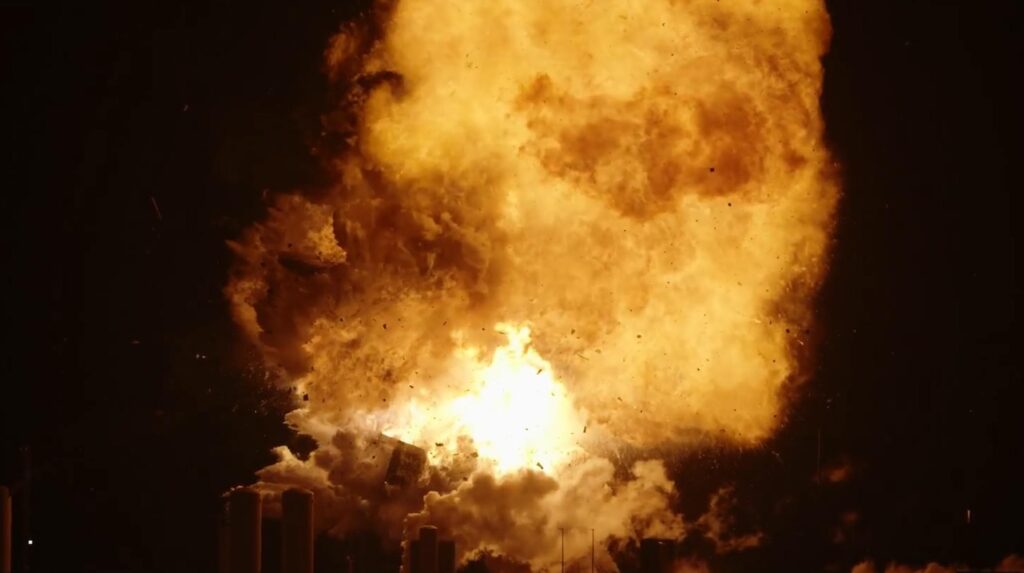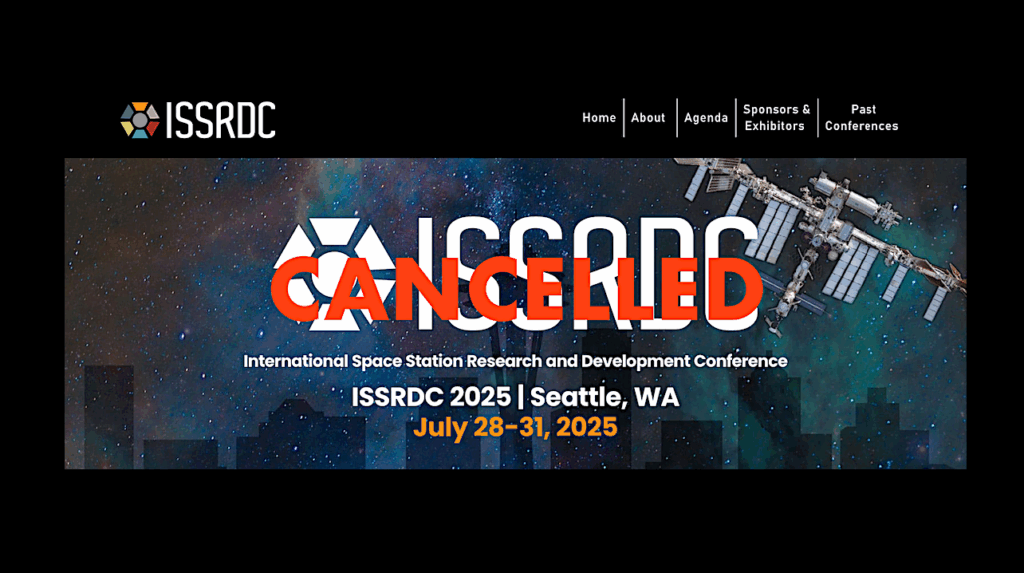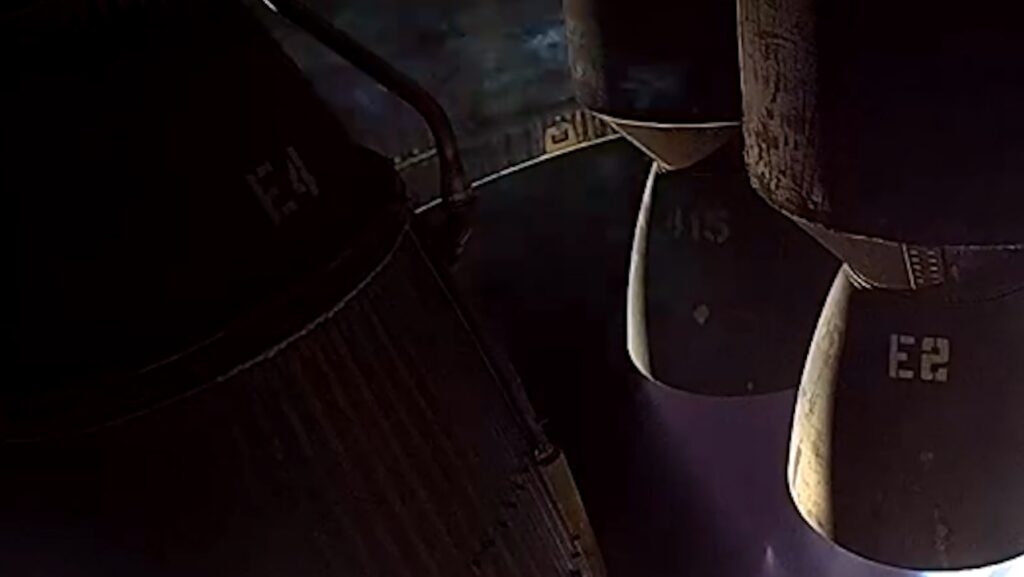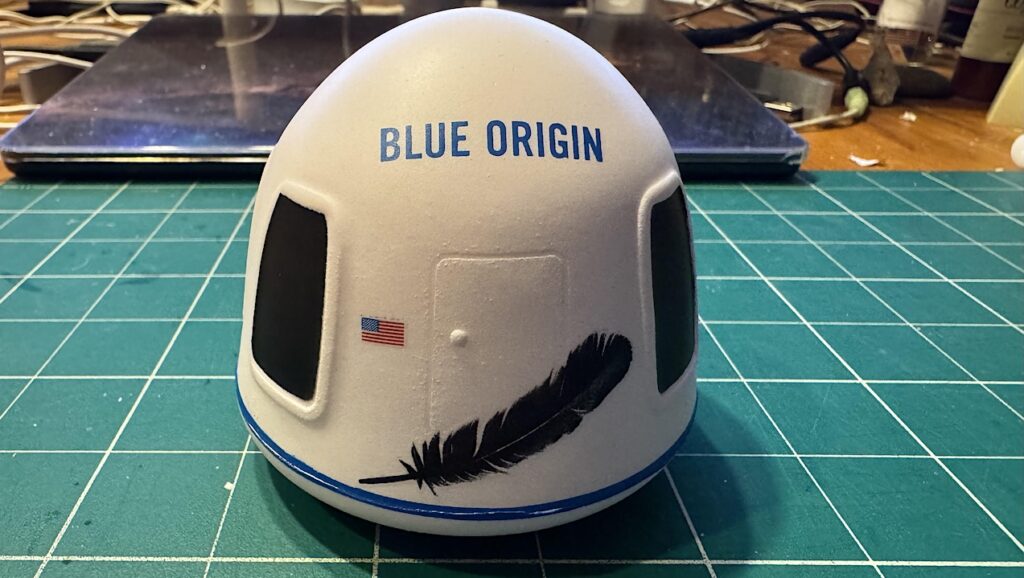Management Is Not On The Same Page As Staff At NASA ISS
#NASA ISS Director Robyn Gaytens asked at #ASGSR what happens to ISS – whether pieces reused or if ISS to be de-orbited. "We have not studied that". Really? After 20yr in orbit & 30yr+ of development ISS Director can't answer a simple question like this? @NASA no longer plans. pic.twitter.com/3bAsMCFoXk
— NASA Watch (@NASAWatch) November 4, 2021
What is baffling about #NASA ISS Dir Gaytens' inability to answer the re-use ISS parts and/or de-orbit ISS question, saying that its "not been studied", is that this is contradicted by ongoing discussions @NASA has with companies as part of their commercial LEO efforts. #ASGSR
— NASA Watch (@NASAWatch) November 4, 2021









Use Starship to bring it down in pieces, re-assemble it as an outdoor Museum attraction.
Maintenance, reuse and replacement of ISS elements and systems was a requirement for ISS together with a mandated lifespan right from the very start. Also studied long before the first elements of ISS were placed in orbit was the method by which ISS could be deorbited using Russian or other modules to provide propulsion and fuel. It is not a mystery; it has been studied for decades.
Maybe it’s not unreasonable to say “we haven’t ruled out reusing components/modules for some future (as yet undefined) project, but the current assumption is to de-orbit (when the money runs out)”. Though there are obvious problems with reusing components/modules …
1) how much life remains ?
2) the complexity of marrying an old design with current technology,
3) how would you test the assembly ?
I doubt if it could be unbolted at this point. It was never designed for that. So much mass has been added to the interior. Elements would lack thermal control and EPS once detached and become useless after 2 hours. Time and remaining life are not on the side of ISS. It is a great achievement. We can built and maintain large structures in space. But all good things come to an end.
“it could be unbolted” What is “IT”. Modules are berthed and they’ve repeatedly shown that berthing mechanisms work fine to unberth and reberth, decades after their last use. Mass has come and mass has been removed. It is not like Mir where the Russians had no way of getting rid of things. ISS is not a lot heavier today than it was when first placed into use. Orbit is a relatively benign environment. One launch. No pressure cycles as compared with commercial aircraft that go through tens or hundreds of thousands of pressure cycles in their life. Temperatures on the interior are steady and on the outside were designed for the range from -100 to + 250.
The CBM drives bolts to mate each module. It does have an unbolt command, but it has had issues. Esp. US LAB, Node 1, and Node 2. The biggest issue is without active ITCS you only have two hours before it freezes up and you can throw it away. Also what would move a module?
The same SSRMS that moved them into place could move them to another place. The CBMs have been used repeatedly.
I seem to remember that at least some of the modules required EVA’s after they were attached, to do various cable connections as well as routing wire harnesses and coolant hoses. Not that any of this is undoable, but it does add a bit to the complexity and scheduling, as presumably they would need to perform some EVA’s shortly before unberthing a module, as well as possible EVA’s afterwards to make new connections and routings after a module has been removed.
One of the reasons unberthing is eminently doable is because is because many of the connections and some of the routing of utilities is on the exterior.
There seems to be a deliberate campaign to ditch ISS.
A fair number of people including NASA management and some of NW contributors seem to be trying to obscufate in order to terminate. ISS is expensive to operate but that is more about how NASA has chosen to operate it than what it really requires. That is mainly about a large flight operations organization NASA keeps trying to justify. Remember NASA did exactly the same thing with Shuttle, and then everyone wondered why lessons were never learned or applied and it never got less expensive, in 35 years. From the outset, ISS Program made the decision they would not apply any of the lessons learned in integrating payloads on Mir, Shuttle, or other prior programs. ISS deliberately barred the experts who had been working towards streamlining those earlier program processes from moving into ISS when those earlier programs ended. ISS developed a reputation as being the most expensive, most complicated, most time consuming and most inefficient integration process ever. Part of that was to justify their large unweildy organization. Part of it was simply because they had no idea what they were doing. NASA had been fostering the development of groups developing meaningful research around the US, until ISS. NASA the pulled the meager funding and shut down their most effective STEM support effort. Most of the payload community walked away.
Now many of those same managers occupy the top management slots in these new commercial station companies. Does anyone think these people now know what to do after failing to demonstrate it in the last 30 years?
Some of the NASA effort to ditch ISS seems to be trying to refocus on a new program, apparently Artemis.
Do people think Artemis is real?
Artemis after 10 years has one rocket, one spaceship, one realistic goal, to circle the Moon in a few years. Remember they had intended to land the first woman on the Moon in 2 years, I guess without a spaceship? The Artemis ‘system’ does not work. They are trying to repeat Apollo, but with a woman, but do it in a more ineffective manner than ever before. So they “NEED” an unfunded translunar Gateway for temporary respite during the few weeks a decade their Orion spaceship is out ‘flying’. Remember they originally wanted a Moonbase and then Moon colony. Instead they wohld now have a lunar orbit station, a flag and one woman’s bootprints.
As many NW contributors have pointed out, the only way Artemis can be succesful is if Space X is succesful. If Space X is succesful with Star Ship, then Artemis, SLS, Orion and Gateway can be shut down and go away tomorrow and no one would notice, but without an ISS or an Artemis, NASA would have a lot of people looking for work.
If I were in NASA management’s position, I’d be looking at more effectively operating ISS and not be too quick to ditch it. If ISS is pre.aturely ditched, NASA could find itself without a program.
“NASA could find itself without a program” … sure, but there will always be a bbq for the pork.
How much research is NASA doing into ISRU on the moon ? How much do we know about the regolith ? what can we do with it ??
3D print it into key chains and moon mugs…
I would not be too quick to dismiss NASA’s hope to ditch ISS. 15 years ago they ditched Shuttle.
Bush announced that Shuttle would be terminated once its mission were complete. NASA tried to cut several missions. NASA was intending to replace Shuttle with the Orion MPCV. After all Orion would be flying within 5 years. Several years late the Constellation Program Manager told Mr. Augustine it would be flying in 2011, about the time Shuttle flew its last mission. Orion was an Apollo look alike because it, and its orbital booster, the Ares 1, were “safe, simple, and soon”. Augustine’s panel responded that they did not see how Orion could be ready before 2016, though 2017 or 2018 were more likely.
Despite several attempts to continue Shuttle, NASA moved out to shut it down as quickly as possible. They shut it down so quickly that when they found they needed some components to support Orion and SLS, NASA had to find new contractors and suppliers.
2010 came and went. 2011 too. 2015, 2016, 2017 and 2018, no Orion flights. NASA missed by an entire decade. They did fly a mockup on an Atlas booster. They proved, 50 years later, that the Apollo reentry system still works.
NASA loves new programs. NASA does not love the old programs so much when they fail to meet the goals they set.
We will see in ten years how well they did in the 2020s. I am not expecting too much from NASA.
If they could bring the modules back down in one piece, that would be amazing!
In my (non-qualified) mind BEAM seams like the low(est) hanging fruit. If they could drop the BEAM down without burning or breaking up, they could then let it float in the ocean for pickup. It doesn’t have much history in it, but could be a start.